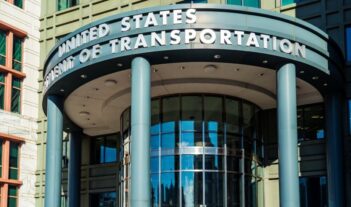
Government report shows how motor vehicle safety measures save lives.
The national highway safety authority has been issuing minimum standards for car and other vehicle components since the mid-1960s. These standards are intended to prevent crashes, injuries, and death on the roadways—and they do. Since 1960, car safety technologies, like the seat belts, air bags, and braking systems to which these standards apply, have helped save more than half a million lives.
The National Highway Traffic Safety Administration (NHTSA) released a technical report in January, reviewing Federal Motor Vehicle Safety Standards and analyzing the effectiveness of safety technologies in cars, SUVs, pickup trucks, minivans, and full-size vans. The NHTSA’s report also estimates how many lives the effective technologies have saved between 1960 and 2012.
The new study found that 31 different types of safety technologies reduce the likelihood of deaths, either by avoiding crashes, enhancing driver or passenger safety during crashes, or preventing fires after a crash has occurred.
Of the standards and technologies shown to reduce the chances of death, most fell into the “crashworthiness” category. Crashworthiness standards enhance driver or passenger safety during crashes.
Outside of the crashworthiness category, effective crash prevention measures included front disk brakes and dual master cylinders to preserve braking power and reflective tape to make heavy trailers easier to see. Recent fuel system integrity standards that mitigate fuel spillage following a crash also save lives.
The NHTSA found that some safety technologies do not prevent death. Antilock braking systems, for example, effectively prevent crashes and injuries, but were not effective at preventing deaths. Glazing for windshields designed to prevent cuts from broken glass were also ineffective at reducing fatalities.
The NHTSA used the effectiveness data, crash data, and statistical modeling to determine how many lives the various effective motor vehicle safety technologies saved between 1960 and 2012.
Since 1975, the NHTSA has been collecting data on fatal motor vehicle crashes in the United States. These data are accessible via the Fatal Analysis Reporting System (FARS) and include information on many factors, such as the location, time and circumstances of the crash, the people involved, the vehicle movement involved, and the type of vehicle.
To generate the estimates of lives saved, the NHTSA looked to FARS for the actual numbers of deaths occurring in crashes between vehicles employing different safety technologies.
Collectively, an estimated 613,501 lives have been saved by these technologies between 1960 and 2012. In 2012 alone, there were 30,800 deadly crashes. The NHTSA reports that the vehicle safety technologies saved 27,621 lives.
Safety technologies directed at crashworthiness have saved more lives than other safety technologies. For example, of the 613,501 lives saved between 1960 and 2012, 561,460 lives were saved by seat belts, impact-minimizing steering systems, frontal air bags, door locks, latches, hinges, and interior impact and side impact protections.
Seat belts are the safety measure that has saved the most lives—an estimated 329,715 lives over the 52 years studied.
The report builds upon a similar report released in 2004. Because the study focused on the effectiveness of Federal Motor Vehicle Safety Standards, the NHTSA did not estimate the impact of efforts to change driver behavior, nor changes to the roadways themselves. The agency also did not examine the effectiveness of improvements to emergency medical services.
The NHTSA recommends regular re-evaluation of the effectiveness of safety technology, since changes to vehicles, the circumstances of accidents, and car technology itself can all affect how well safety technologies work. The driverless cars now on the horizon demonstrate how technological innovation has the potential to change the roadway environment and shape safety concerns.
The Department of Transportation and the NHTSA are now accepting public comments on this report’s findings and any proposed additions or changes. The comment period will end at the beginning of June.



